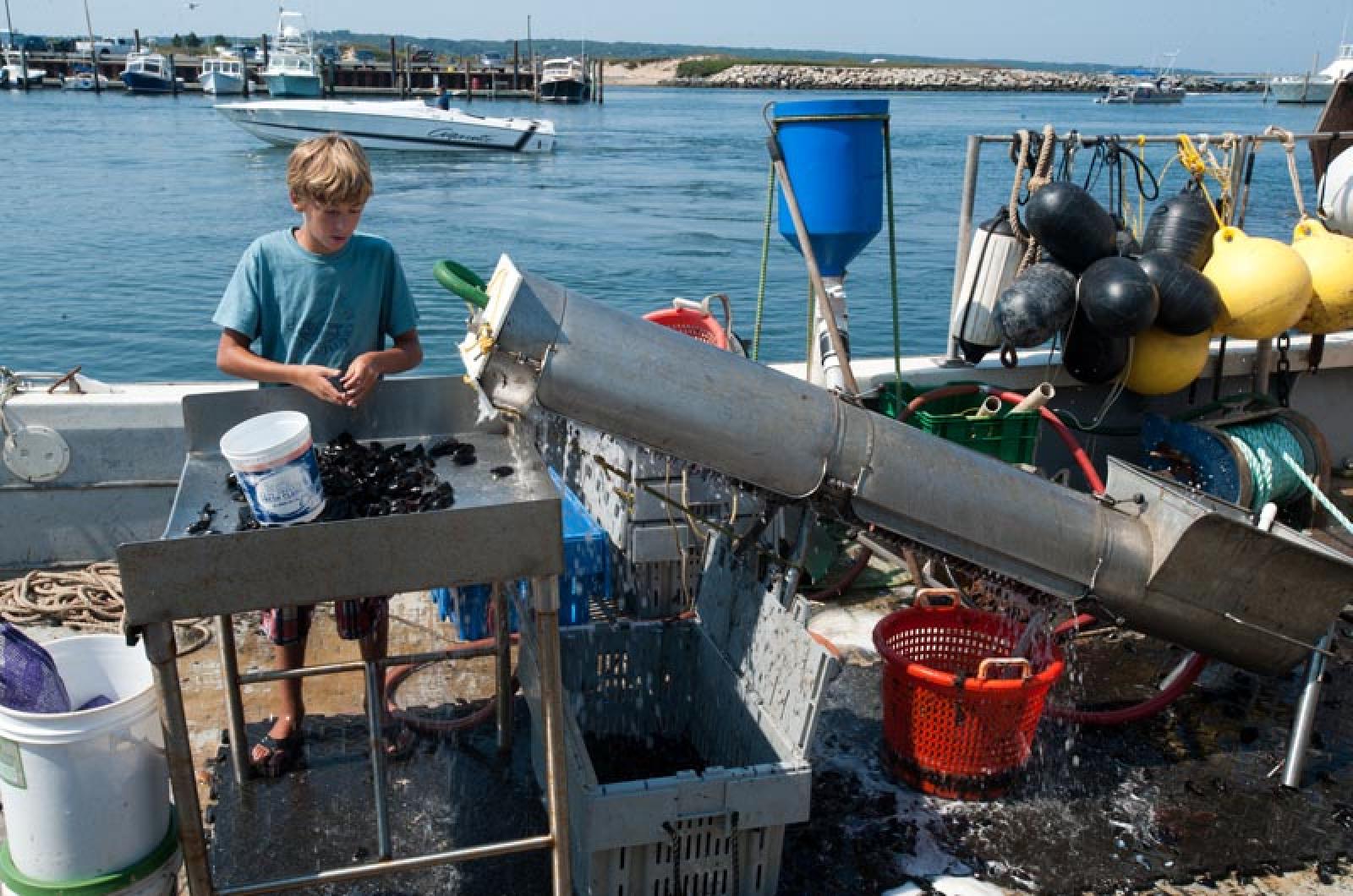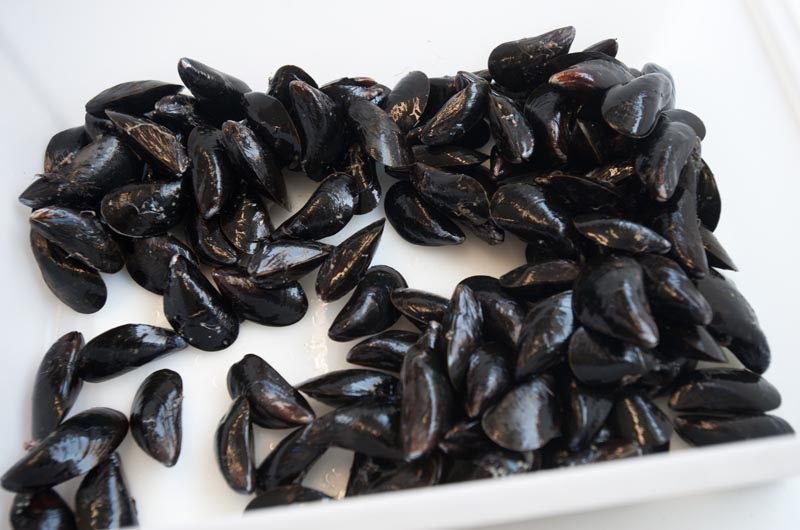Vineyard local restaurants began serving locally harvested blue mussels in July and the prospects for the future look even better. Alec Gale of the Menemsha Fish House said he was pleased with the results. The last of the locally harvested blue mussels were shipped this week but there may be more.
Almost a fourth of the blue mussels sold came from the Vineyard’s first offshore blue mussel farm. The three-year-old farm is located in Vineyard Sound, a mile from Cedar Tree Neck. The site is 15 acres, of which only a quarter of the area is being used at present. The mussels are grown on suspended ropes, and thus never touch the bottom. There are five lines, and each length is 600 feet long. The wild blue mussels came from local shellfish beds.
Mr. Gale said he sold 42,000 pounds in total of mussels, of which approximately 10,000 pounds came from cultured blue mussels and the rest were wild. Nearly all of this went to 20 Island restaurants but some went to mainland restaurants. Two years ago Mr. Gale harvested at least 2,000 pounds from the farm for the market.
“People are into them,” Mr. Gale said. “We sold the cultured blue mussels as premium. And the wild were very good.”
Blue mussels grow naturally in these waters. The idea of establishing an experimental farm came out of talks that were held in 2006. Rick Karney, director of the Martha’s Vineyard Shellfish Group, with the help of Scott Lindell of Woods Hole Marine Biological Laboratory, wrote the $214,000 federal grant to explore the feasibility of raising the shellfish commercially in these waters. There is a similar setup in coastal New Hampshire. An additional $5,000 came from the Martha’s Vineyard Permanent Endowment Fund. Early in the project, the biggest hurdle was getting the necessary federal and state permits to establish the site. It wasn’t until 2009 that these were granted.
Scuba diving proved successful for harvesting some of the wild blue mussels that came from shellfish beds. Mr. Gale said he got help from the Mayhew family. The fishing boat Quitsa Strider II, captained by Matt Mayhew, used a net to harvest the wild mussels.
There was a setback late in the season in harvesting the wild blue mussels, as they started coming in with pea crabs. This is a very small crab that lives close to the bottom and will take up residence in the shell. Mr. Gale said it was not all that surprising, but it did lower the value of the wild shellfish.
Cultured blue mussels don’t possess the pea crabs because the cultured shellfish never touches the bottom.
Suspending the blue mussels on a rope in the water column not only keeps the pea crabs away, the shellfish grow faster. Mr. Gale said it takes 10 months for a blue mussel to get to harvestable size. Right now he is working on putting juvenile blue mussels on ropes this fall so they’ll be ready for a big harvest next summer, hopefully bigger than this year.









Comments (4)
Comments
Comment policy »